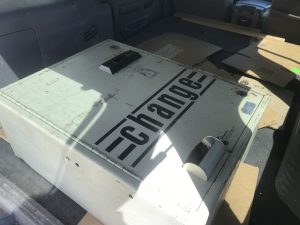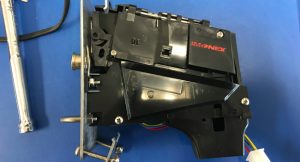Laundromat Dryer Fire
I received a call on the 800 line from one of my Laundromats. One advantage of the 800 number is you have the choice of accepting the call after you pick it up, sending it to voicemail or listening as they leave a message and picking up if you want to.
In this case, I took the call. It was from the Fire Department in the small town where one of my more remote Laundromats is located. I was pleasant and asked how their day was going and in a true Southern fashion, he answered the question before getting to business.
Now one thing to keep in mind is that the Fire Departments call to set up visits for inspections and because they can’t always make the appointment due to fires and stuff it may take a few calls before we actually get the inspection completed.
So after the formalities were completed he explained they were on scene at my Laundromat due to a dryer fire and they needed access to the back room to turn the power off.
I packed up and headed that way. I was unable to initially get a hold of the lady that lives in the area and does my cleaning but she did get there just a few minutes before me.
When you get a call like this you never know what to expect. It may be some damage to one of the machines, there may be some smoke damage and some walls to repair or patch to secure the area or the place could be a total disaster.
Once I arrived and found only a couple of SUV’s there and nobody with hoses cooling the hot spots I headed in to see the damage.
The fire was contained in one of the dryers and did not even have any smoke damage to the front of it.
After some investigation, I found a lot of build up on the temperature sensor. We looked at some of the other ones with the fire department to show that they are kept clean as well as the lint is removed on a regular basis.
An issue I have found on some of the sensors is that some older type rugs and blankets will come apart in the dryer and build up on the sensor. This works like a blanket to keep the heat out and the dryer will run hotter to try and maintain the set temperature.
I also found out during the discussion with the cleaner that everyone liked that dryer “because it dried clothes so fast”. Sometimes it only took $0.50 to dry, sure you had to grab them and throw them on the table to cool but it dried great.
So it appears that either the load that was in the drier or a previous one had deposited a bunch of lint etc on the sensor and combined with the already high dry temperature it was a little too much.
There was no sign of the customer that had put the clothes in the dryer so I’m not sure what was put in there or if it was something that should not have been in there at all.
I left the dryer unplugged until I can investigate the temperature issue and get a new lint screen. I also need some lint door locks as the one on this dryer and the adjoining dryer on each side was opened but the Fire Department.
A few things to mention to new and experienced owners. A quick search will find pictures of the results of dryer fires in Laundromats. The results of the one at my store are rare as there was so little damage.
If you think through the situation that would cause a dryer fire and the process of it you can understand how to prevent them as much as possible.
I have seen dryer ducts that were completely plugged without catching fire. Many fires will start due to an item being in the dryer that shouldn’t be, for example, a lighter, other cause would be overheating of clothes or due to mechanical failure.
The NFPA website lists ” The leading cause of home clothes dryer and washer fires was a failure to clean (32%), followed by unclassified mechanical failure or malfunction (22%). Eight percent were caused by some type of electrical failure or malfunction.”
Failure to clean the dryers reduces the drying efficiency by reducing the airflow and forcing your customers to spend more time in your store and tying up machines for too long on busy days.
The normal operation of the dryer is pretty simple. The air is moved over a heater (gas, steam or electric), the air is heated, moved through the drum and clothes, filtered and blown outside. The fan is normally after the drum which creates a negative pressure in the dryer to hold the door shut and control the flow of lint and hot air.
If a fire starts in the dryer drum or at the heating element the fan is going to continue to pull air out of the drum and exhaust it and the fire out of the exhaust duct. This situation provides fresh air to build the fire but initially, it forces the smoke outside.
The problems arise when either the fire in the drum gets too big that it can’t be controlled by the airflow or the lint in the dryer and duct catches fire. At this point, the fire and heat will begin to escape through whatever space is possible. The motor may fail due to the plastic fan catching fire or the wiring insulation breaking down. The rubber gaskets around the dryer door and glass may fail and the fire begins to travel up the walls.
Keeping your lint filters and ductwork clean can prevent fires as well as possibly reducing the damage caused should a fire occur.
When you are building or renovating your store make sure the duct work is as short and straight as possible. Seal all of the seams with a proper metal tape and clean regularly. The frequency will be determined by the manufactures recommendations and will also be affected by the volume of business your store does. And remember to set your schedule based on your busiest dryers.
Below are some pictures of the dryer:
This is the top of the sensor looking down through the drum.

The inside of the base. The lint screen is normally on the angle tracks in front of the fan.

This is the temperature sensor. You can make out the sensor itself in the center along the bottom of the mass. It is copper colored and about the size of a pencil. The material built up on the sensor insulated it from the heat causing the burner to run too hot

Another view of the sensor from the bottom looking up into the drum.

If you have any comments please post them below.
Ken




